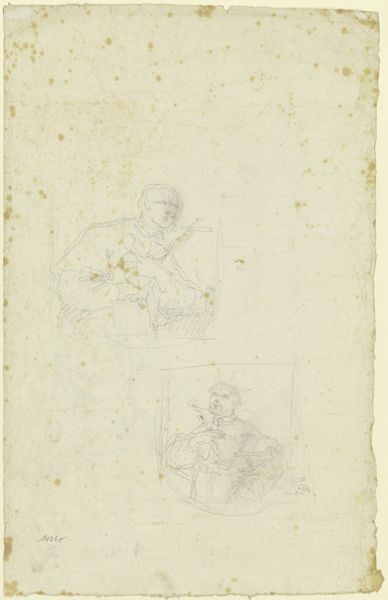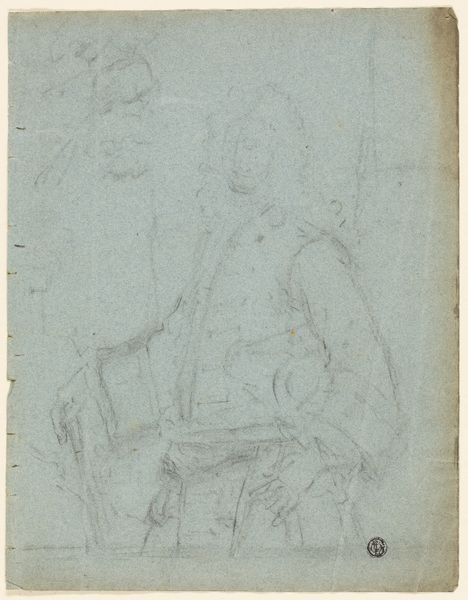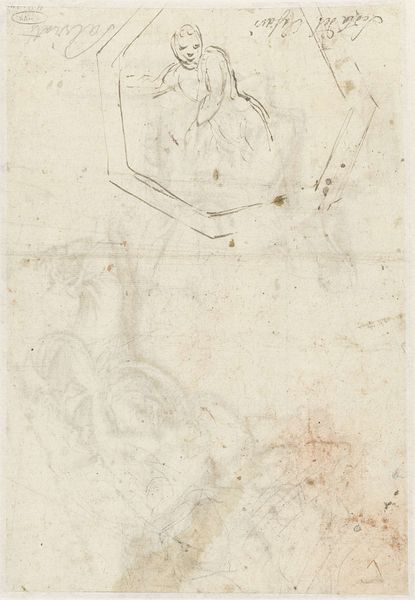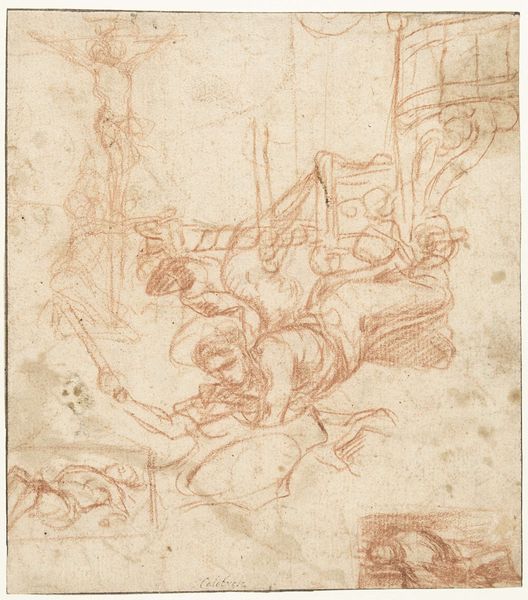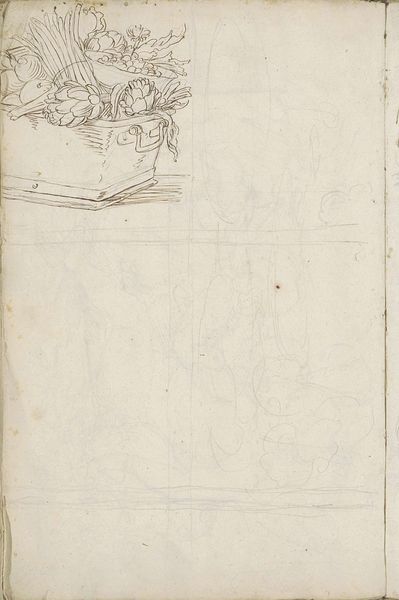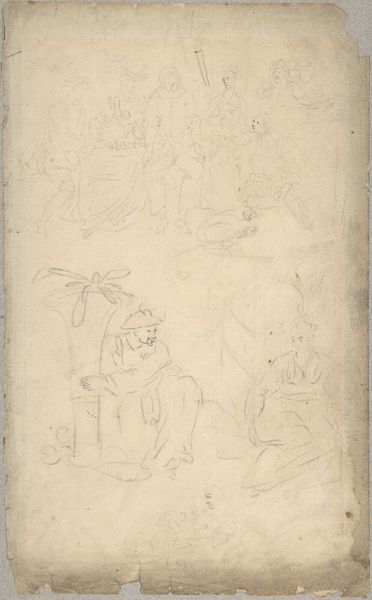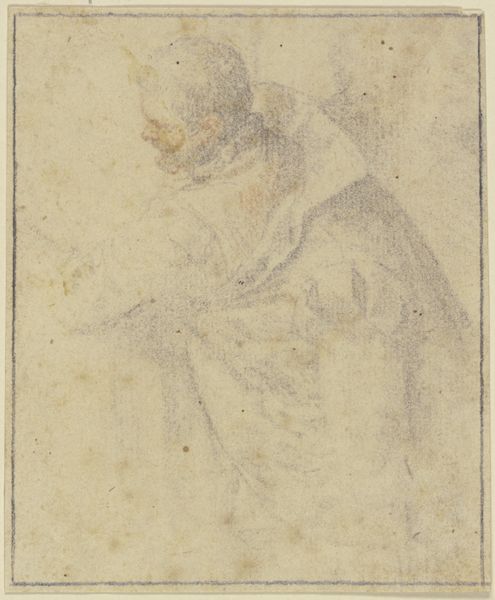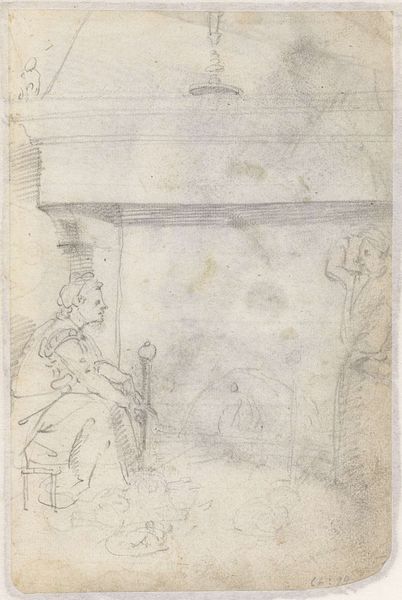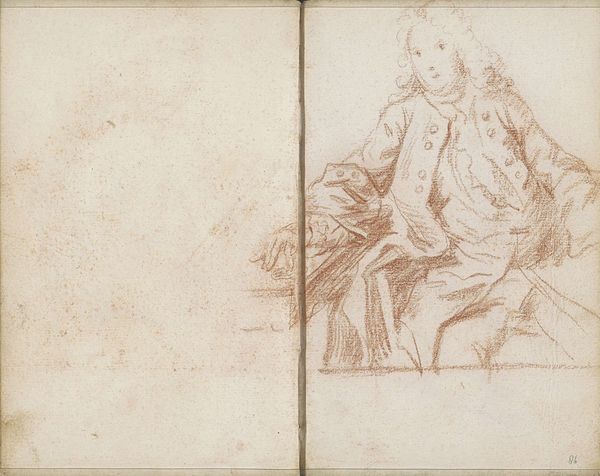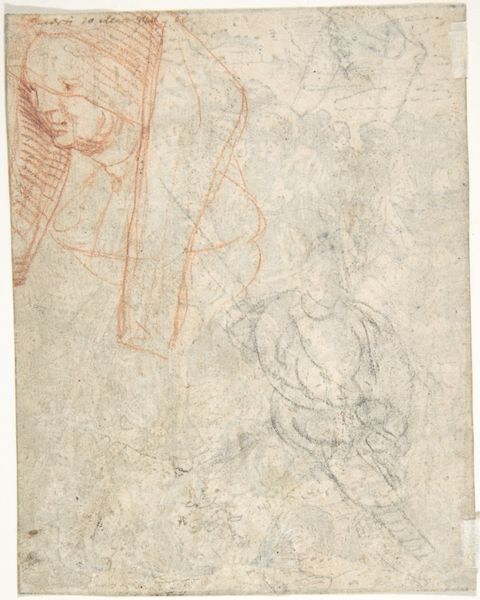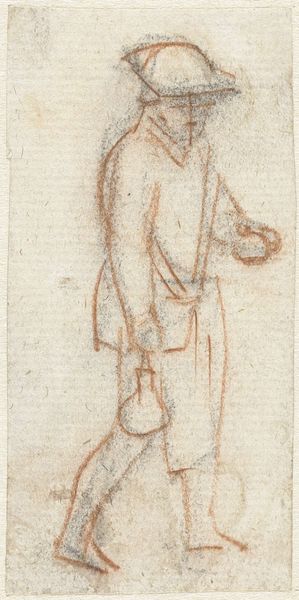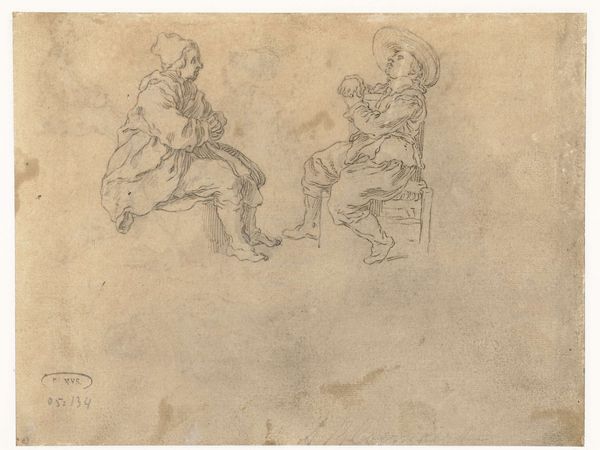
drawing, paper, pencil
#
portrait
#
drawing
#
figuration
#
paper
#
11_renaissance
#
pencil
Dimensions: height 272 mm, width 175 mm
Copyright: Rijks Museum: Open Domain
Editor: This is "Rekenende man en vrouw," or "Calculating Man and Woman," an anonymous drawing from 1608, currently held at the Rijksmuseum. It's rendered in pencil on paper. What immediately strikes me is its preliminary, almost casual nature. What can you tell me about it? Curator: What I see here is not just a study of figures, but a snapshot into the burgeoning world of early commerce. Notice the objects on the table: what appears to be an abacus or counting board. Consider the material realities of creating and distributing such instruments in 1608. What social structures enabled their production, and whose labor was involved? Editor: So, you’re seeing the drawing less as a portrait and more as an artifact of economic activity. The depiction becomes almost secondary to the materials being represented? Curator: Exactly. Think about the value placed on accurate accounting at this time. The drawing reveals the rise of merchant classes and the increasing complexity of trade. How do the rudimentary materials—pencil and paper—contrast with the sophisticated financial activities they depict? This is not high art destined for a palace, but a practical tool, intimately tied to the daily labor of calculation. Editor: It's fascinating to consider it in terms of labor and materials. I never thought about how even a drawing like this could reflect so much about the economic realities of the time. Curator: The very act of drawing, of representing these figures and tools, becomes a form of labor itself, documenting and perhaps even celebrating the burgeoning world of commerce. The choice of readily available and inexpensive materials underlines this connection to everyday work. How might our understanding change if this were rendered in oil on panel? Editor: That puts a completely different spin on it. I initially saw it as a simple study, but now I appreciate how deeply intertwined it is with the social and material conditions of its time. Thanks!
Comments
No comments
Be the first to comment and join the conversation on the ultimate creative platform.
